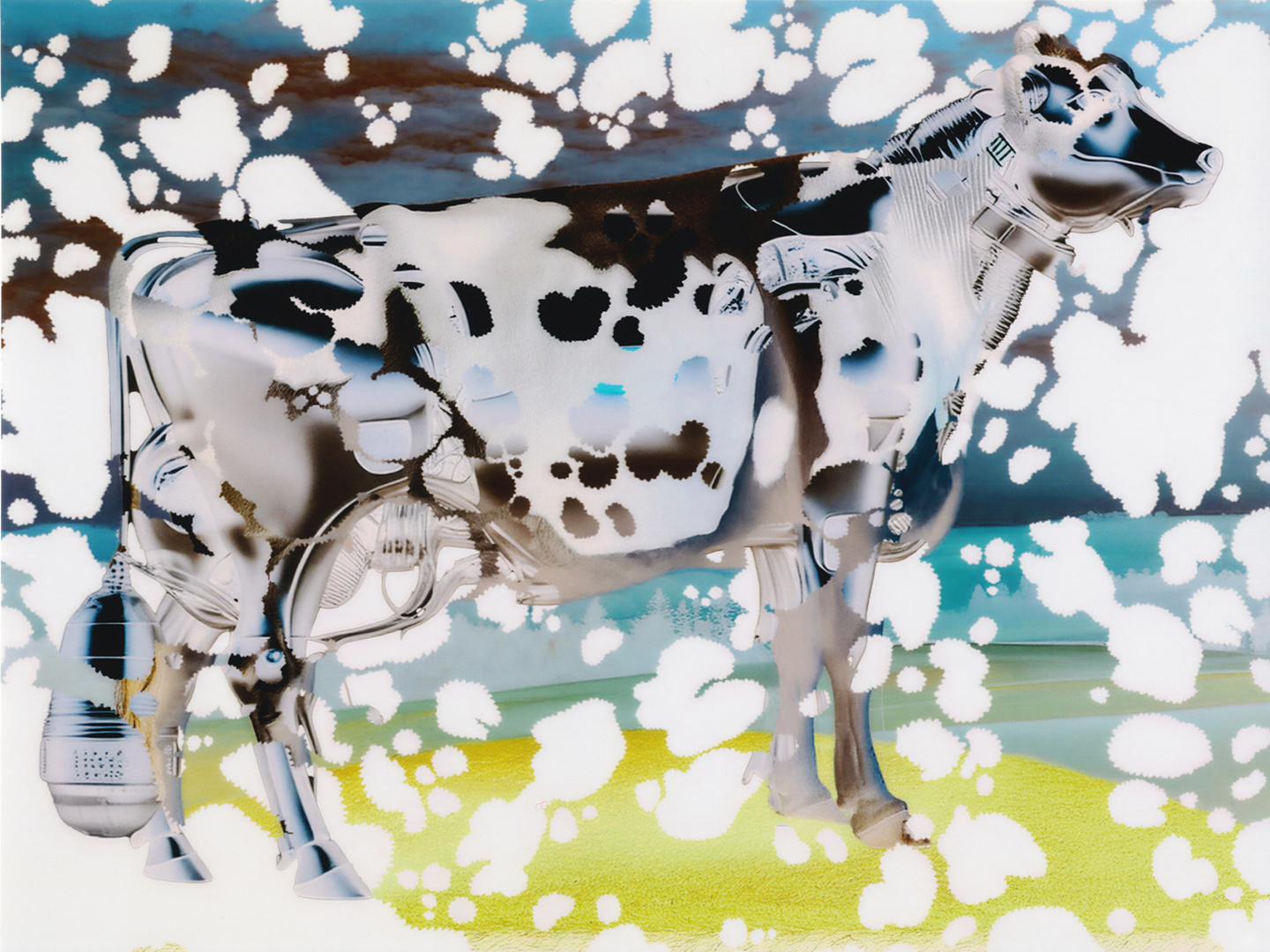Symposium
September 12, 2024, 9:45am
The symposium Cowborgs in the Polder is the closing event of the research project of the same name led by Víctor Muñoz Sanz at the Faculty of Architecture and the Built Environment at TU Delft. This project, funded by Dutch Research Council (NWO), has been exploring the interactions between human and non-human animals, robots, data technologies, genomics, and farm architecture in the industrialized Dutch dairy landscapes. With contributions by Taneha K. Bacchin, Lluís Alexandre Casanovas Blanco, Catia Faria, Nikos Katsikis, Víctor Muñoz Sanz, Sofia Nannini, Katy Overstreet, Jolijn Schilder, Gent Shehu, Lenneke Slangen, and Abbie Vandivere.
The development of the first working prototype of a milking robot in 1992 marked the beginning of a digital revolution in dairy farming. Today, self-guided barn cleaners, automated kitchen and feeding systems, robotic fencers, sensor-packed cow collars, smartphone apps, artificial intelligence assistants, among other innovations, have replaced human labor and reportedly improved animal welfare. However, the widespread adoption of automation, in combination with innovations in genomics and feeding, also facilitates the operations and management of larger, industrial farms.
In The Netherlands, the dairy farming industry is being questioned for its adverse effect on nature, particularly in the context of the so-called nitrogen crisis. To better address the environmental problems caused by farming, it is important to understand how technoscientific developments are affecting those places where food is produced. How has the design of farm buildings, animal bodies and technologies transformed Dutch dairy landscapes? Calvert usefully conceptualized the assemblage of bovines, humans, robots, algorithms, and reproductive techniques as cowborgs, in reference to Donna Haraway’s influential definition of the cyborg. This project has taken a step further and looked at those cowborgs in the materiality of the Dutch polder—in its constructions and designs.
Contributions to this event are organized in a sequence of eight interlocked chapters. Highlighting a diversity of disciplines and approaches, presenters will explore questions around the cultural significance of cows and farming, processes of rural modernization, the design of animal bodies and farm buildings, the role of technology in the instrumentalization of animal labor, the planetary footprint of farming, notions of care in human-cow-microbe-landscape entanglements, and questions of animal, feminist and AI ethics. This structure embraces the multifaceted complexity of the topic, encourages cross-pollination, and invites participants and audience to weave unexpected threads across topics. Ultimately, this event aims to foster a conversation on what forms of engagement with dairy farming, its histories, science and politics, animals and peoples would be needed to become worldly and build more livable other worlds.
Program: September 12, 2024, 9:45am–5:45pm
Restoration: Abbie Vandivere & Jolijn Schilder, Mauritshuis / Rural Modernity: Lluís Alexandre Casanovas Blanco, architect and curator / Handbooks: Sofia Nannini, Politecnico di Torino / True Type: Víctor Muñoz Sanz, TU Delft / Feedlot: Nikos Katsikis, TU Delft / Technobiopolitics: Dániel Szalai, visual artist and researcher / Care-Production Knotting: Katy Overstreet, University of Copenhagen / Xenozoopolis: Catia Faria, Complutense University of Madrid.
With moderation and responses by Taneha K. Bacchin (TU Delft), Gent Shehu (TU Delft), and Lenneke Slangen (Archined). More details and presenter bios here. Seats are limited, and lunch and drinks are included. RSVP (required) in the link above.
Cowborgs in the Polder: how the design of farm buildings, animal bodies and technologies transformed Dutch dairy landscapes is a project funded by the Dutch Research Council (NWO) through the grant SSH Open Competition XS Pilot 2022–23 round three (project 406.XS.03-056). Principal Investigator: Víctor Muñoz Sanz; Research Assistant: Divya Agarwal. Critical Environments Group, Section of Urban Design, Department of Urbanism, Faculty of Architecture and the Built Environment, TU Delft.







